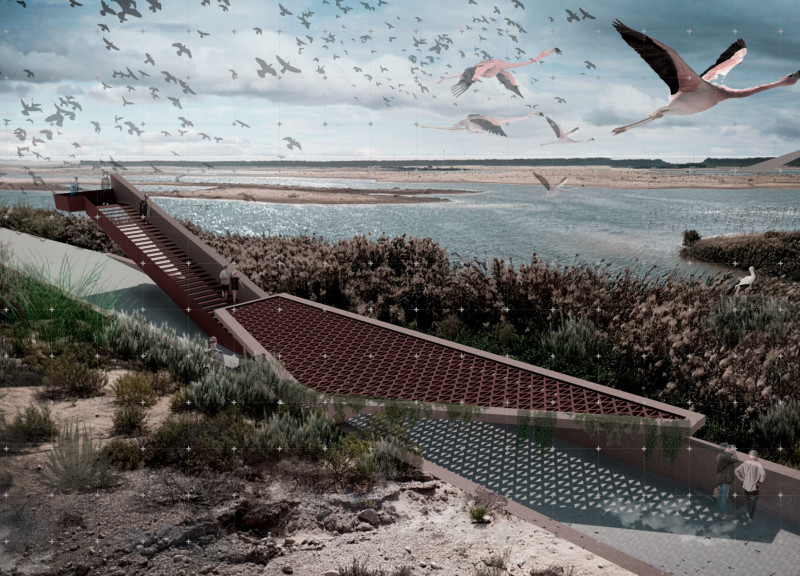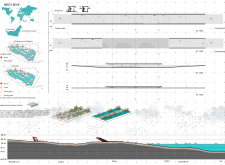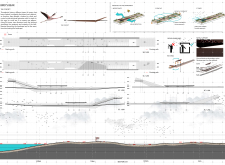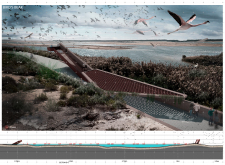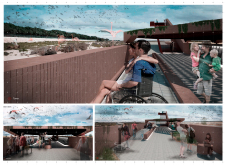5 key facts about this project
The BIRD'S BEAK project is located in the Al Wathba Wetland Reserve in Abu Dhabi, United Arab Emirates. It aims to create a connection between visitors and the natural environment. The design emphasizes the idea of a floating modular platform that adjusts to the varied landscape of the wetlands. This concept allows for a rich experience focused on wildlife observation and exploration.
Floating Modular Platform
-
The central feature of the design is a modular platform that floats above the ground, enabling dynamic interaction with the wetland ecosystem. This structure promotes visitor engagement while ensuring local wildlife is not disturbed. It connects different sighting points and pathways to facilitate easy movement across the site, ensuring that bird flight paths remain clear and enhancing the chances for wildlife viewing.
Observation Tower
-
An important aspect of the design is the observation tower, which offers wide views of the surrounding area. Inspired by traditional lookout structures, the tower provides a place for visitors to survey the landscape. Its form and height stand out visually while blending with the environment, reflecting the beauty of the local bird species and their habitats.
Visitor Interaction
-
The design includes strategically placed hiding places to allow for quiet observation of wildlife. This encourages visitors to engage with nature in a thoughtful way. The layout promotes circular movement throughout the site, inviting exploration and deepening the connection to the ecosystem. Design features ensure that visitors can appreciate nature while minimizing their impact, leading to a better understanding of local biodiversity.
Environmental Integration
-
The project follows important ecological principles by considering factors such as microclimate management and solar protection. Metal supports contribute to the structure's stability while allowing the floating platform to function effectively. Each design element works together to ensure that the architecture respects and enhances the surrounding landscape, encouraging responsible interaction with the natural world.
The result is a careful balance of form and function. The design integrates smoothly with the natural landscape, creating a place where people can appreciate both architecture and nature in harmony.


